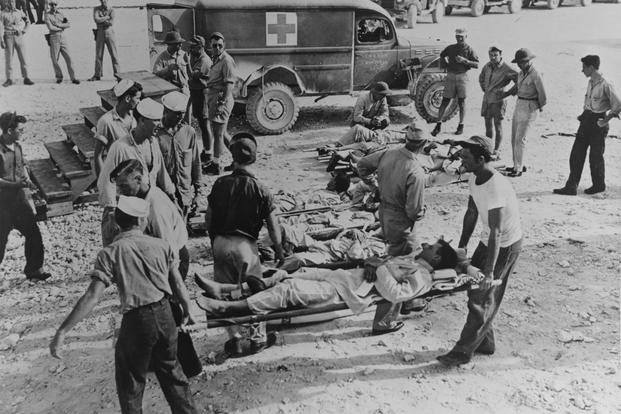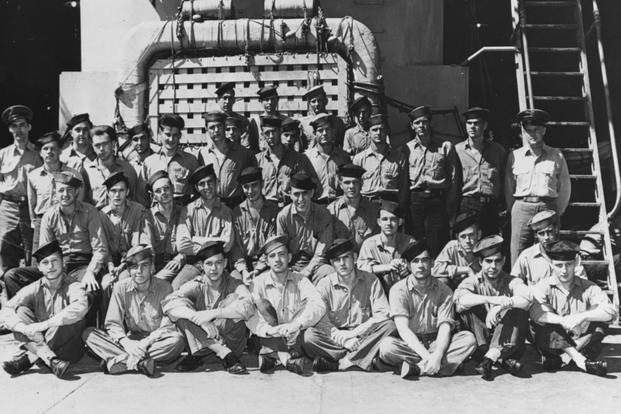The Navy confirmed this week that a clerical error led to the decades-long confusion over the number of survivors of the Portland-class cruiser USS Indianapolis' sinking in 1945, saying it was the number of personnel on board the ship that was incorrect, not the number of survivors.
Sam Cox, director of the Naval History and Heritage Command (NHHC), ordered a review of the information after entrepreneur and philanthropist Paul G. Allen discovered the wreckage of the Indianapolis last summer and reignited the longstanding debate over the number of survivors.
Cox asked NHHC historian Richard Hulver, Ph.D., to work with filmmaker and Indianapolis historian Sara Vladic to compare research and determine whether there was a discrepancy in reporting.
The result is a story of tragedy, sudden changes in fortune, and a lack of action by the Navy to correct a known mistake.
The full report shows while the number of survivors was, in fact, 316, the number of personnel on board the ship when it was sunk was actually 1,195 and not 1,196 as previously thought.

Hulver and Vladic found the confusion centered around one person: Radio Technician Second Class Clarence William Donnor, a reservist from Big Rapids, Michigan, who was assigned to the Indianapolis as a member of the crew.
However, just hours after reporting aboard the ship and checking in, Donnor received word that he had been chosen for an officer training program and had orders to report immediately to Fort Schuyler, New York.
The crew of the Indianapolis was preparing for a top secret mission to transport components of the atomic bomb "Little Boy" to Tinian in the Northern Mariana Islands and, in the confusion, Donnor's departure was never documented.
When the ship sank on July 30, 1945, the mistake led to Donnor's parents receiving a telegram alerting them to their son's "missing" status. Donnor's mother quickly wrote to then-Chief of Naval Personnel Vice Adm. Randall Jacobs to correct the error. She confirmed her son was alive and well and specifically stated she hoped her letter would "help to keep your records straight."

The Navy launched an investigation to confirm Donnor was still alive but, instead of correcting the error about his presence on the ship, they simply changed his status card from "missing" to "survivor" -- putting in motion many years of confusion over exactly how many men survived the ship's sinking.
Donnor went on to serve in the Navy until 1946, but it is unclear if he ever knew about or commented on the error that led to such debate.
This was actually the second mistake made about survivors from the Indianapolis.
In 1945, the record was changed from 881 casualties to 880 because Marine Corps Cpl. Edgar Harrell was mistakenly reported as deceased. Harrell survived the sinking and became a well-known speaker on the tragedy.
Survivors of the sinking faced four days of dehydration, exposure and shark attacks before being rescued. More than 800 men went into the water, but only 316 survived.

Hulver and Vladic concluded their report by saying, "To an outside observer, this small casualty discrepancy might seem insignificant. To survivors, descendants, friends and the Navy, it is not. As historians and friends of the USS Indianapolis family, we are committed to commemorating the sacrifices of those who served by accurately telling their story -- the good and the bad. We do so by holding ourselves to the highest scholarly standards.
"This entire event shows the inherent difficulties in accounting for casualties in the fog of war and in verifying those figures years after the fact -- particularly with an episode as chaotic as the loss of Indianapolis," they wrote. "We can now confirm, 73 years later, that the Navy's number of survivors in 1945 was correct at 316, and that the final crew list for that tragic voyage has been corrected to show 1,195 men were on board and 879 lives lost."














